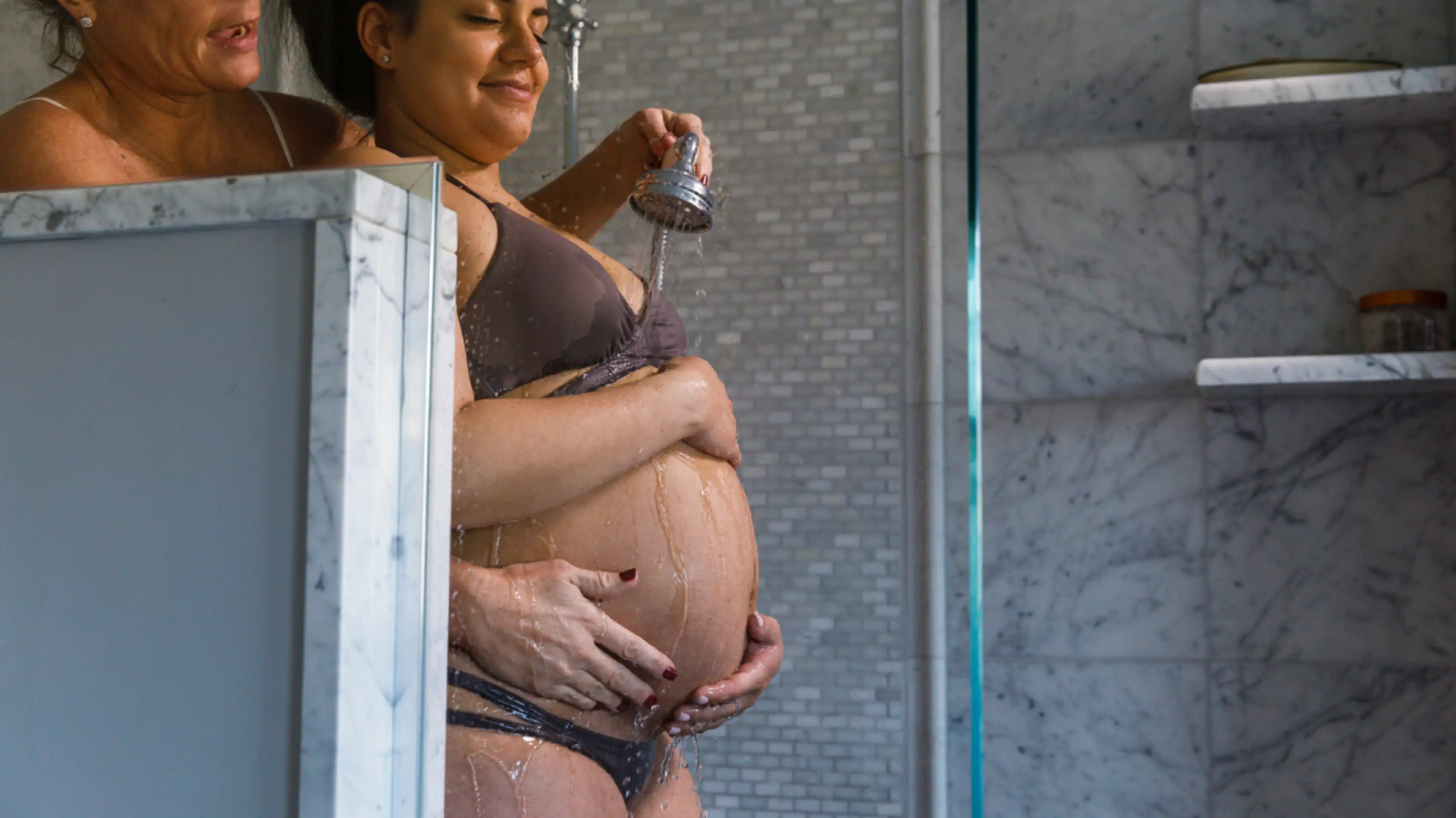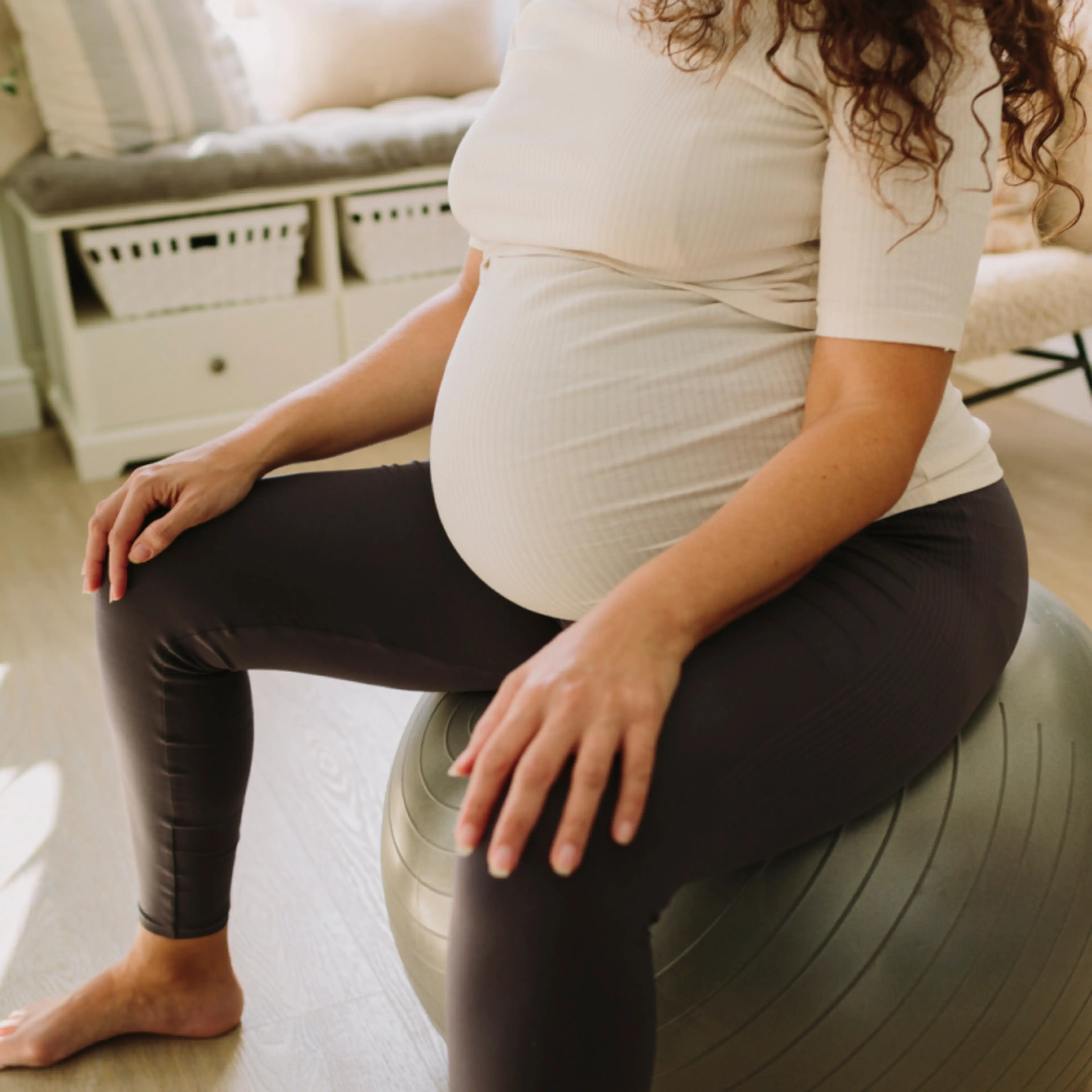If you’re pregnant and considering genetic testing, or if your doctor recommends it, you may have already heard of amniocentesis, one of the most common prenatal tests that’s usually performed during your second trimester. But you may not be as familiar with chorionic villus sampling (CVS), a prenatal test that, according to the Mayo Clinic, screens for genetic conditions such as Down Syndrome and Cystic Fibrosis and is available in your first trimester.
Why might you consider CVS? And what can you expect during the procedure? Below, we lay out all the facts, plus the potential risks and benefits.
What Is Chorionic Villus Sampling?
Chorionic villus sampling is a prenatal diagnostic test where a small sample of tissue from the placenta is analyzed to provide information about a baby’s genetic makeup. A CVS tests for chromosomal abnormalities and certain birth defects and genetic conditions, including Down syndrome 1 , Tay-Sachs 2 and cystic fibrosis 3 .
The test gets its name from the chorionic villi, the part of the placenta where the sample tissue is extracted. Chorionic villi are small pieces of placental tissue and contain the identical genetic makeup as the fetus.
What’s the difference between chorionic villus sampling and amniocentesis?
Chorionic villus sampling and amniocentesis are both diagnostic prenatal tests. There are, however, a few main differences between the two. Choosing whether to conduct CVS or amniocentesis is “based on the gestational age,” says Dr. Williams. “CVS is done earlier, 10 weeks to 13 weeks (in the first trimester); amniocentesis is done during the second trimester, 14 weeks to 20 weeks gestation. Sometimes it’s done later, but that’s the ideal time frame.”
The tissue that’s being tested is also different: a CVS tests placental tissue, while an amniocentesis tests amniotic fluid. Unlike amniocentesis, a CVS cannot test for neural tube defects, such as spina bifida. Results from a CVS are also usually available sooner than those from an amnio.
Why Is Chorionic Villus Sampling Done?
CVS is most often done for two reasons: if test results may impact the management of your pregnancy, or if the results would affect your decision whether or not to continue a pregnancy. “All ob-gyn providers are supposed to offer their patients genetic screening and diagnostic testing,” says Dr. Carla Williams 4 , an ob-gyn at Montefiore New Rochelle in New York. “You don’t necessarily have to have certain risk factors; everyone should be offered it, but a provider may recommend a certain procedure if you have certain risks.”
You may choose to undergo a CVS if:
You’re 35 or older.
You had abnormal results from a first-trimester prenatal screening test or an ultrasound.
You have a family history of a genetic condition or your partner is a known carrier.
You had a chromosomal condition in a prior pregnancy.
When Is Chorionic Villus Sampling Done?
Unlike an amniocentesis, another prenatal diagnostic test, CVS is done early in pregnancy. Chorionic villus sampling can be performed as early as 10 weeks and up until about 13 weeks of pregnancy.
What to Expect During Chorionic Villus Sampling
Chorionic villus sampling involves using a needle, guided by ultrasound, to collect a sample of the placental tissue. You’ll be awake for the procedure and will have to lie still on an exam table. Prep time for a CVS test may be about 10-15 minutes, but the procedure itself generally takes only a minute or two.
There are two methods your doctor can use to perform a CVS test:
Transabdominal CVS. A transabdominal CVS test is performed via your abdomen. Your doctor will clean the area with an antiseptic and use an ultrasound to guide a long, thin needle through your abdominal wall and into your uterus. (It’s common to feel some stinging and cramping when this occurs.) The tissue sample will be extracted, and the needle will be removed.
Transvaginal CVS. A transvaginal CVS test is performed via the vagina. Your doctor will clean your vagina and cervix with an antiseptic, and will then use a speculum to open your vagina. From there, a catheter (a thin, hollow tube) will be inserted through your cervix while your doctor monitors the position of your fetus via ultrasound. When the catheter reaches the placenta, your doctor will use gentle suction to remove a small tissue sample.
Which method is used depends on the location of the placenta and the position of your uterus. According to a spokesperson from the American College of Obstetricians and Gynecologists (ACOG), “Typically, this is a physician preference but placental location also plays a role in determining the approach” when deciding whether a transvaginal or transabdominal CVS is more appropriate.
Some women report cramping or a small amount of vaginal spotting or bleeding immediately after chorionic villus sampling. “But if you were to develop any signs like fever, severe pain, heavy bleeding, cramping, foul-smelling discharge, anything like that, those are definitely signs where you’d want to see a provider for a follow-up,” says Dr. Williams, although “it is expected for you to have minimal discomfort or pain at the injection site.” Also look out for chills, and leaking amniotic fluid after the procedure. And although it’s not medically necessary, some women decide to relax for the rest of the day following the CVS procedure.
Results from a CVS may be ready anywhere from one to seven days following the test.
Benefits of Chorionic Villus Sampling
Making a decision around prenatal testing is a very personal one. If you do decide to pursue chorionic villus sampling, there are a few benefits:
Accuracy. Unlike prenatal screenings, which tell you if your baby is more likely than others to have certain conditions, a CVS is diagnostic. That means that, save for rare cases, the results of a CVS are always correct.
Timing. CVS can be done during the first trimester of pregnancy. This gives you more time to research and make decisions around your pregnancy should any abnormal findings be present.
Pregnancy management. A CVS can reveal a number of genetic conditions that may impact either the management of your pregnancy or a decision around whether or not to continue it. For some women, this information can be very empowering in what can be an otherwise difficult time.
“It’s important for every patient to think about what they’re going to do with the answer that they receive,” Dr. Williams says. “How important is this for me? Why am I doing this [test]? If I get a [certain] answer, does that mean I want to terminate the pregnancy, or is there no way I’m going to terminate this pregnancy, and I’m moving forward whatever the case may be? That’s something important to take into account.”
Risks and Side Effects
The biggest risk associated with CVS is miscarriage; however, it’s important to interpret this risk through a statistical lens if you’re looking for reassurance around the safety of this prenatal test.
According to the Mayo Clinic, the risk of miscarriage after chorionic villus sampling is estimated at about 0.22 percent. Another study 5 of nearly 150,000 women found that CVS was not associated at all with a risk of miscarriage. If you’re deciding whether or not to have a CVS and are concerned about miscarriage, speak to your healthcare provider about their specific miscarriage rates, as risks from this procedure can be further mitigated by your doctor’s experience and skill level.
Other risks associated with CVS include infection and Rh sensitization, when some of your baby’s blood enters your bloodstream. (Rh sensitization is preventable by receiving an injection prior to the procedure if you are Rh negative.) “With CVS, there’s a small risk of limb reduction,” says Dr. Williams. “But that risk is when it’s done pretty early, especially if it’s done before 10 weeks. Complications of chorionic villus sampling can be spotting, bleeding—that can happen in up to 32% of patients who do it transcervically; the incidence when it’s transabdominal is lower.”
There’s also a very small—around 1 percent—chance of a false positive with CVS. If your provider feels this may be the case, they may recommend following up with an amniocentesis in the second trimester to obtain more accurate results.
Chorionic villus sampling can be a reliable and safe prenatal test to provide you with health information about your developing fetus. Don’t hesitate to speak with your doctor or a genetic counselor 6 for more information.
Once you get a CVS test, try to do something you enjoy, like get a prenatal massage or have lunch with a friend, to help you relax until you get your results.












